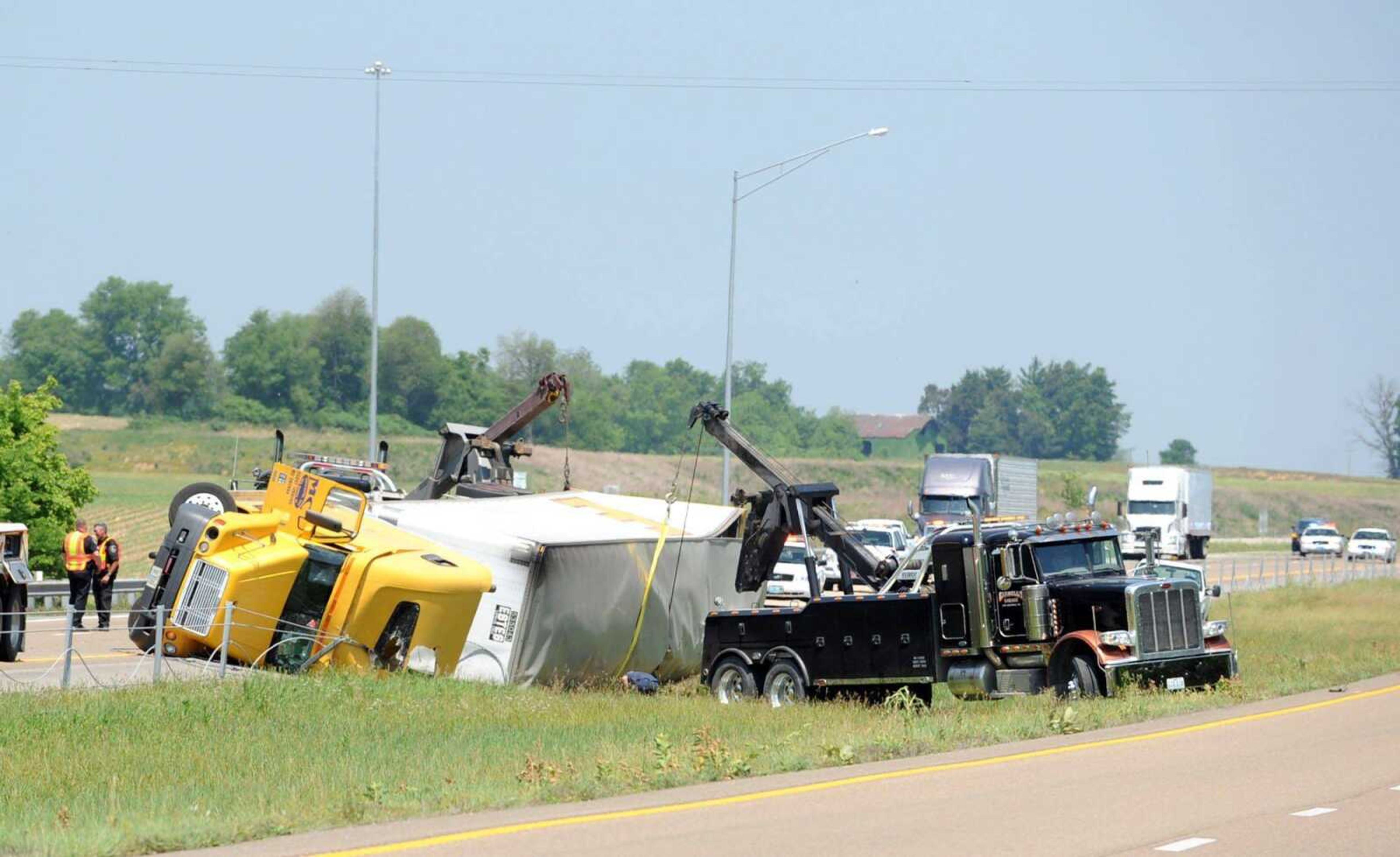Safety rises with cable barrier but concerns have been raised
High traffic corridors, where vehicles travel at high rates of speed, can be deadly when drivers lose control. Early the past decade, Missouri began installing high-tension guard cables to prevent out-of-control vehicles from crossing the medians of Interstate 70. ...
High traffic corridors, where vehicles travel at high rates of speed, can be deadly when drivers lose control.
Early the past decade, Missouri began installing high-tension guard cables to prevent out-of-control vehicles from crossing the medians of Interstate 70. In 2002, there were 24 fatalities involving cars that crossed the median and crashed along I-70, according to the Missouri Department of Transportation website. In 2007, a year after construction of the cable barrier was completed the length of I-70, there was one.
A stretch of Interstate 55, from Sikeston, Mo., to Oak Ridge was an early segment of highway to receive the barriers, said MoDOT construction materials engineer Andy Meyer. He said the project took place in 2005 and 2006.
"From Oak Ridge to Sikeston, we estimate we have saved about two lives per year," Meyer said. "When we complete that cable basically from Sikeston to St. Louis, we will be saving about six lives per year."
But many question the use of cable barriers. Some argue they're too close to the road where cars travel. For many motorists, the installation of the cable barriers on I-55 and the way they're installed was a questionable move.

Brian Collins of Jackson argues that while the barriers save lives of people in passenger vehicles, they are death sentences for motorcycle riders like him.
While riding, Collins has been forced to swerve into the median to avoid collisions in front of his motorcycle.
"My viewpoint is really from a motorcyclist's aspect," Collins said. "If that cable was there, there's no way I'd be alive today."
The cable systems used along highways must meet crash test standards established by the Federal Highway Administration and the American Association of State Highway and Transportation Officials, according to MoDOT's website. The standards are based on the "predominant vehicle types used on the highway system; enclosed passenger vehicles, such as cars and trucks," the website said. Unprotected motorcyclists are not part of the standard for which the systems are designed.
The system MoDOT uses is the Gibraltar cable barrier system, produced by a company in Texas.
The barriers line the highway medians along one direction of traffic. Along I-55, they primarily line the southbound lanes. Three 3/4-inch woven steel cables, weighing about 1 pound per foot, are pinned to a series of square steel pipes, placed in sleeves mounted in concrete eight feet from the traffic lane, Meyer said. Large anchors are placed at each end of the cables. The cables are tightened until the tension on each reaches 5,000 pounds. The cables are broken by a series of turnbuckles, at which the tension can be adjusted, Meyer said.
"Five thousand pounds of tension allows it to hopefully absorb the impact of a car or light truck," Meyer said.
Crews made adjustments Thursday to a segment of the barriers near the 119 mile marker north of Oak Ridge. They said the cables expand in the heat of the day. On Thursday, as the temperature neared 103, the tension was down to about 3,900 pounds. Charts showed that was about where it was expected to be, said Louie Ward of Cape Girardeau, who was working for Collins and Hermann Inc. of St. Louis.
If a vehicle strikes the barrier, the operator of the vehicle is responsible for repairing it.
Meyer said a two-person crew can typically repair the barrier after a crash in a few hours. He said steel guardrails take days to replace and when damaged often leave areas where crashes are frequent unprotected.
The cable systems are being installed on routes with traffic volumes exceeding 20,000 vehicles a day. They cost about $105,000 per mile to install.
Budget constraints might prevent other divided highways from receiving the cables in the near future, said Rep. Tim Meadows, a Democrat from Imperial, Mo., who sits on the state House Transportation Committee.
Rep. Dave Hinson, a Republican from St. Clair, Mo., and member of the Transportation Committee, is also an emergency medical technician.
"Knowing the places where we had numerous amounts of crossovers, it has dramatically cut our crossover accidents in Franklin County," Hinson said. "Since the cables were installed, we may have had one or two that have crossed. If a car is going at a high enough speed, they still can cross."
MoDOT allows that the cables won't stop all vehicles, and that there are more property damage claims from drivers whose vehicles strike the cables.
"There are still a lot of vehicles that are too big, or traveling at such a speed, or bouncing around such that the median is unable to completely stop them," Meyer said. "We also have to acknowledge that property damage claims do go up. What we're saying, our position is, we'll trade a little property damage to save a life. That's worth a few additional trips to the body shop."
jgamm@semissourian.com
388-3635
Connect with the Southeast Missourian Newsroom:
For corrections to this story or other insights for the editor, click here. To submit a letter to the editor, click here. To learn about the Southeast Missourian’s AI Policy, click here.










